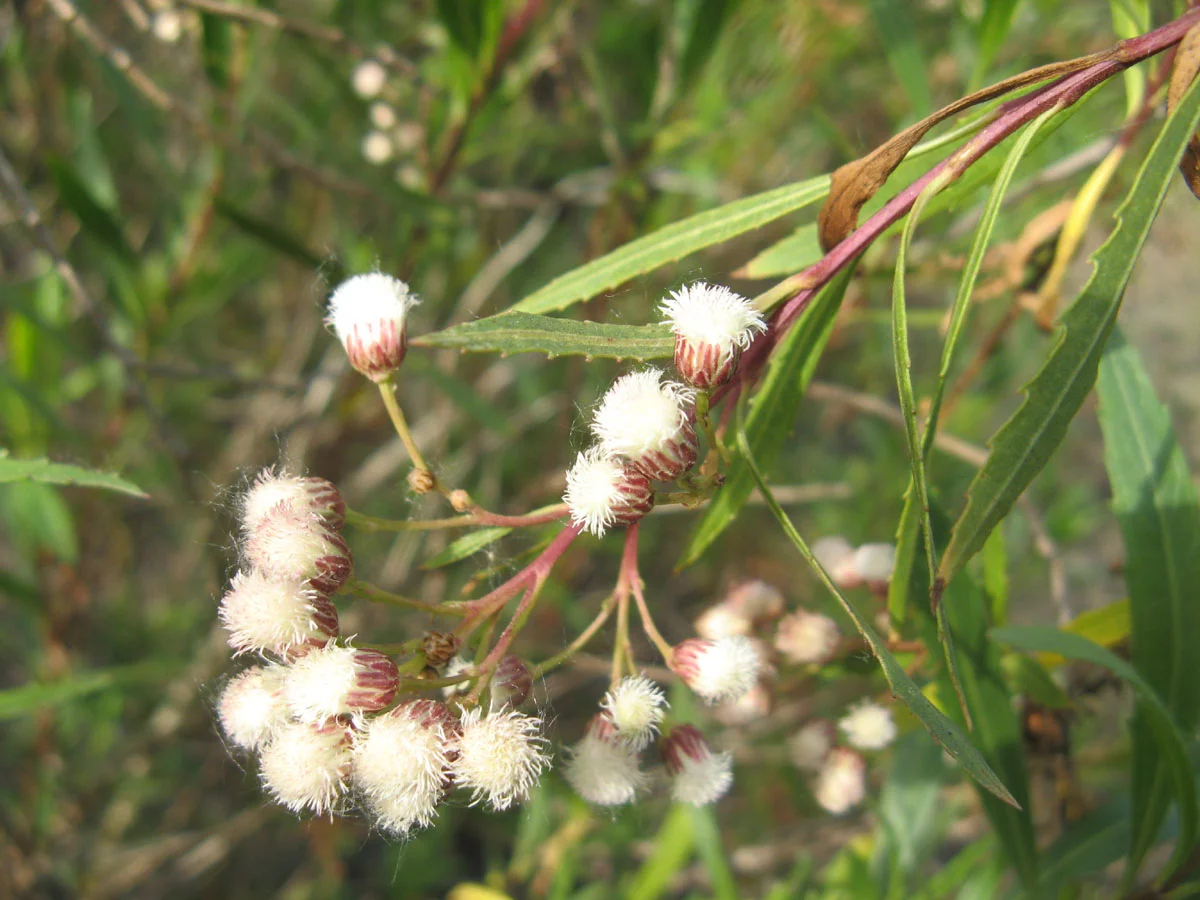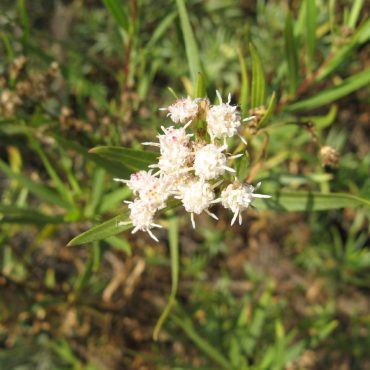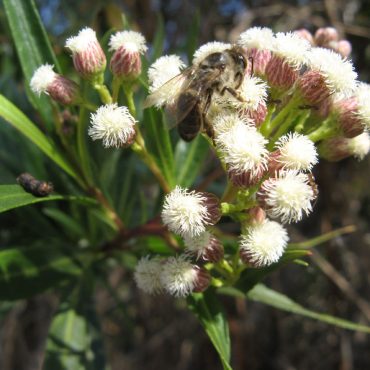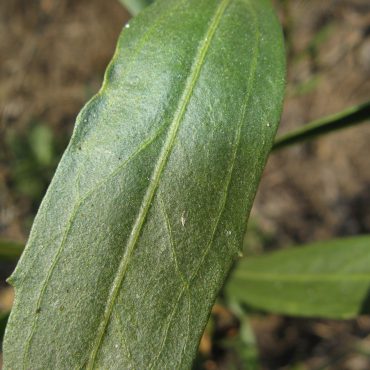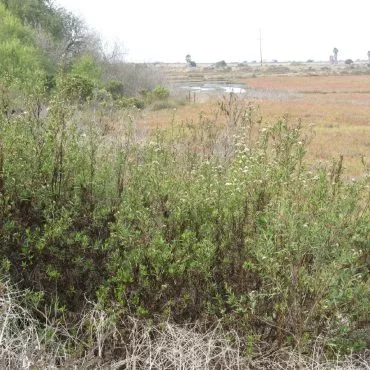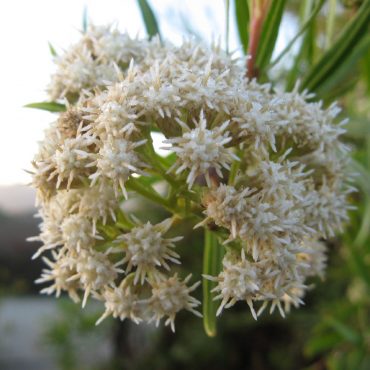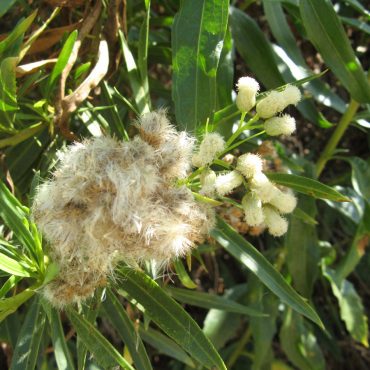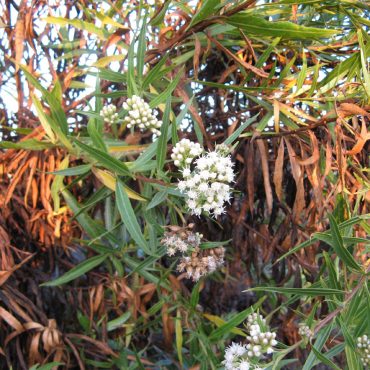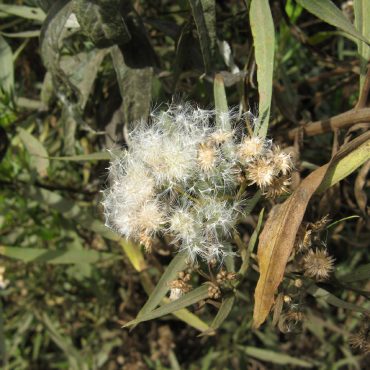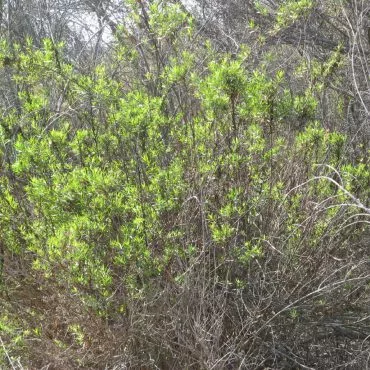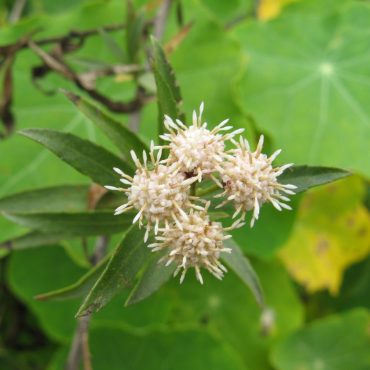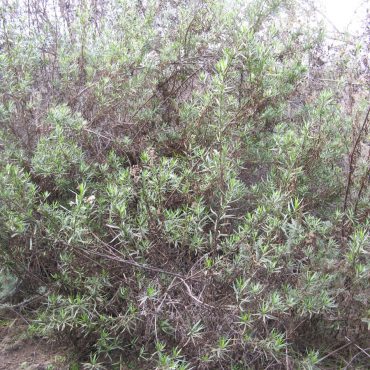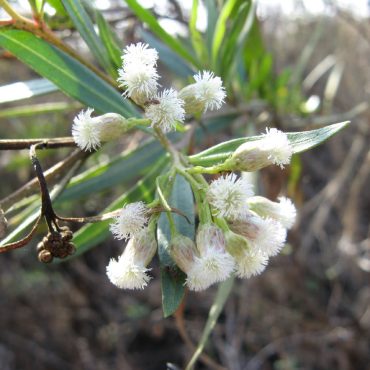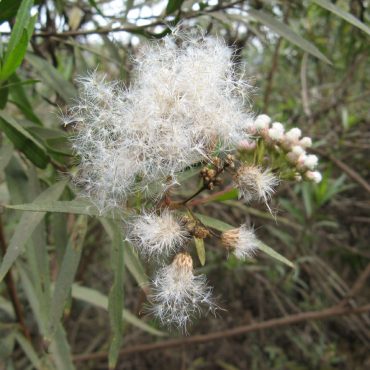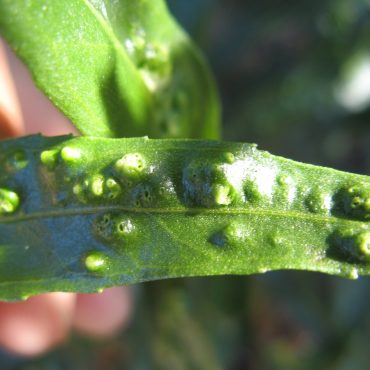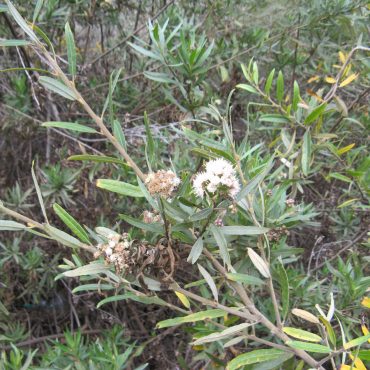Mule fat is an evergreen shrub, usually less than 10 feet (3 m) tall. Numerous simple, flexible branches extend up from the base. Leaves are 2-6 inches (5-15 cm) long, lance-shaped, often shiny with resin. Margins are toothed or smooth. Leaves are easily confused with leaves of arroyo willow (Salix lasiolepas), with which mule fat is often associated.
Mule fat bears male and female flower heads on separate plants (dioecious). Flower heads are composed of cream to white disk florets and are arranged in terminal clusters. Floret structure can be difficult to interpret with the naked eye. Each male floret has a conspicuous but non-functioning female stigma and style. The stamens of the male floret are united into a tube around the style. Together, these protrude from the floret giving the entire flower head the spiny appearance of a mace, the club used in battle by knights of old. The female floret resembles a paintbrush due to numerous fine hairs (the pappus) that surround the slender style and two-parted stigma. Ultimately the pappus will form the parachute that disperses the seed. The main flowering period is late summer through early spring but flower heads may be found all year.
The species name of mule fat, salicifolia. loosely translates as “willow-leaved”. Indeed, it is easy to mistake mule fat for arroyo willow, especially as they are often found together. The clusters of small disk florets of mule fat are unlike the fuzzy catkins of willow. In the absence of flowers, they may be distinguished by leaf characteristics. The mature leaves of mule fat are resinous, which makes them shiny, and they are the same color on both surfaces; the mature leaves of arroyo willow have a duller surface and are paler below. The leaves of willow, like leaves of most species, have a single, central vein running the length of the leaf. Mule fat leaves often have three parallel veins, one central and two close to the margins.59 The marginal veins can be hard to see in young leaves.

